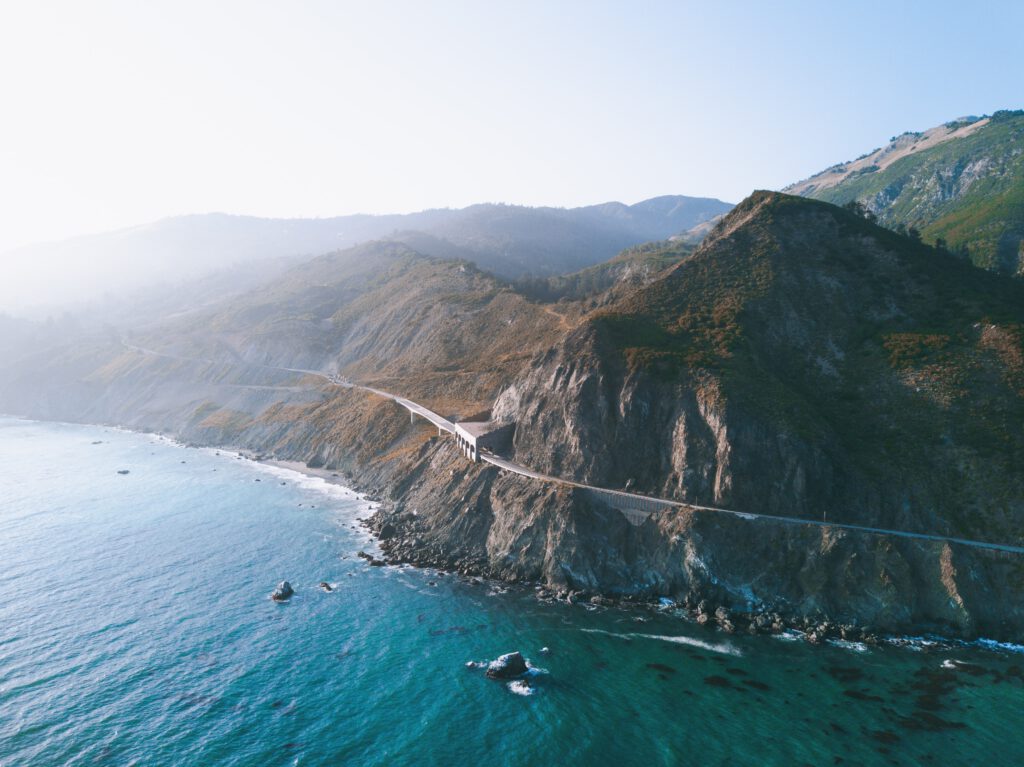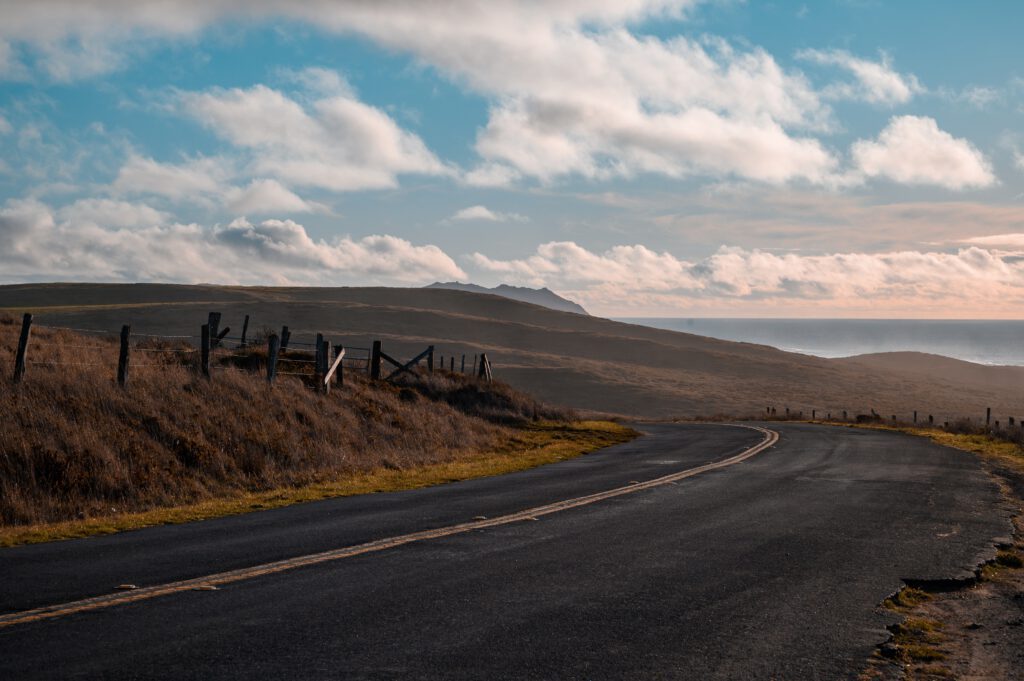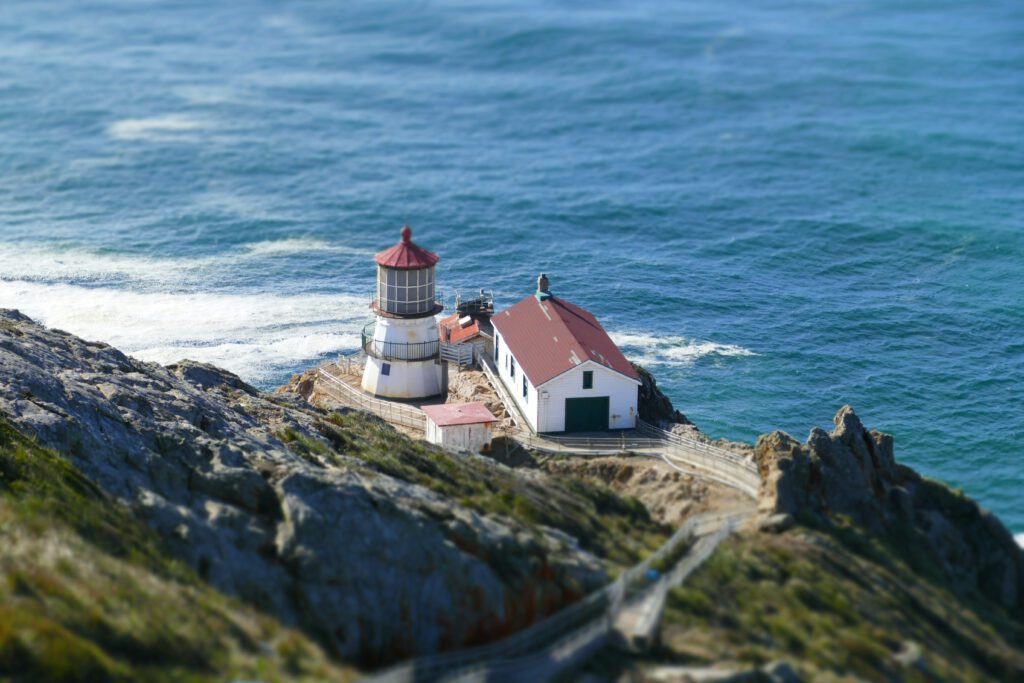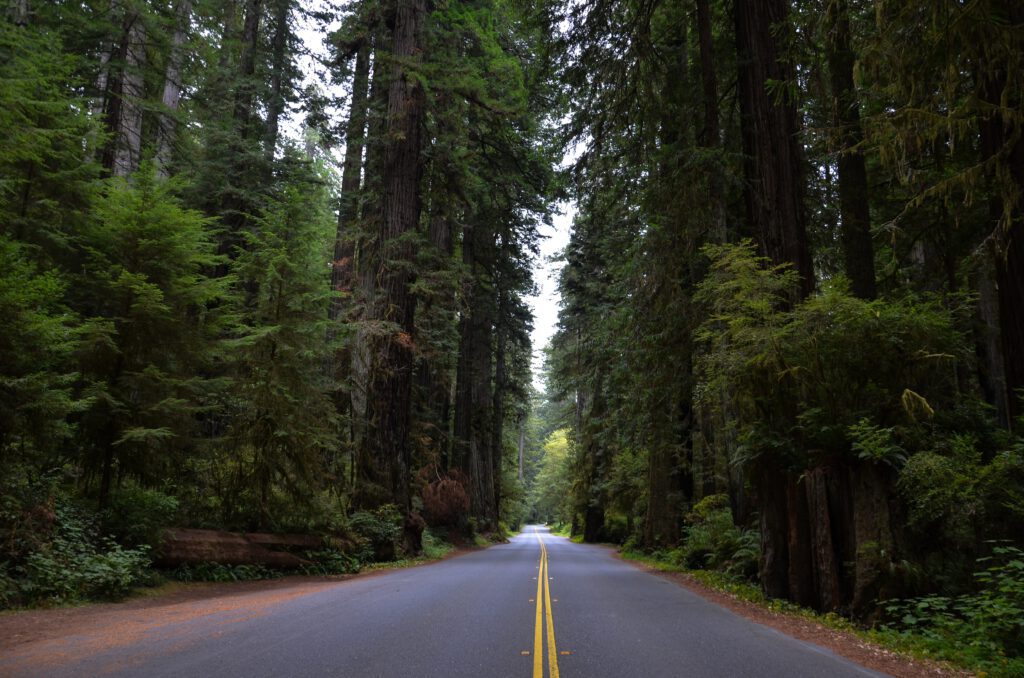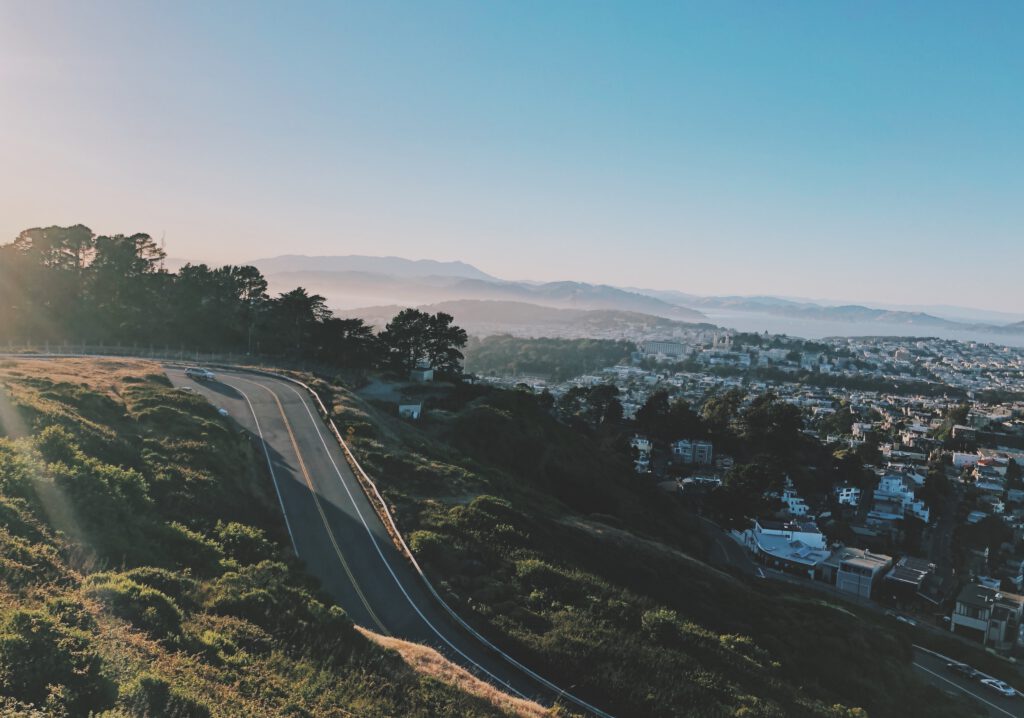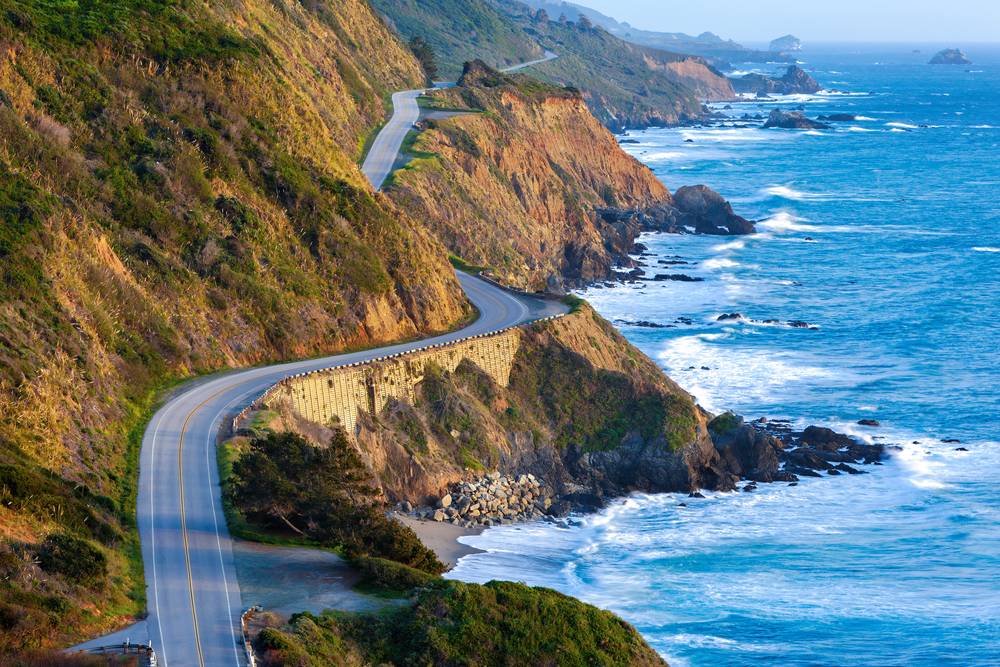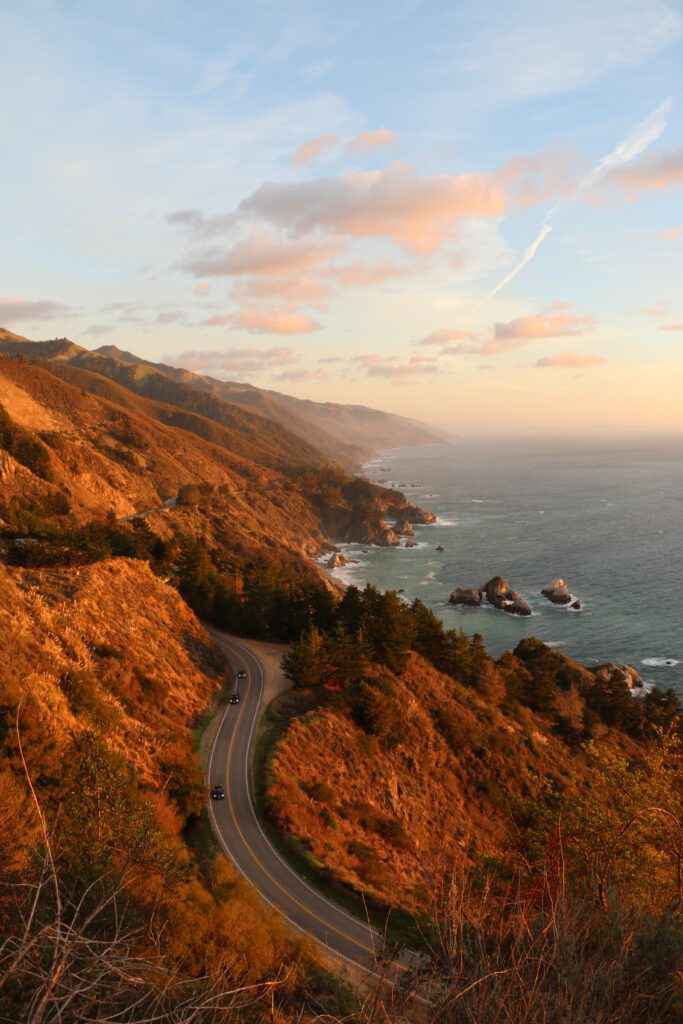Cycling in the United States is a fantastic experience. There are so many beautiful areas where you can totally immerse yourself in nature and everything around it. Although everyone quickly thinks of Colorado and Boulder there are many more beautiful places. Los Angeles, for instance, already has some beautiful hidden places. A little further north, you can cycle a wonderful route, the famous Highway 1. In one sentence: Highway 1 in California is amazing. You can actually ride all the way from Leggett in Northern California to Dana Point in Orange County, Southern California. This route is not only a popular route for car owners and holidaymakers with motorhomes, but also for cyclists. We'll take you along for the ride.
Highway 1 is great!
Highway 1 is a household name in the US. In fact, every road trip in California goes via Highway 1. It's stunning views, winding curves and you'll also really need some legwork what it's hilly. Although most trips start in San Francisco and then end up in Los Angeles, it is more than worthwhile to also pick up the northern part of this route.
Highlights
The highlight of this route is definitely the Point Reyes Lighthouse. If you were to start all the way in Leggett, you are already almost 300 kilometres on the road. Point Reyes is probably one of the most photographed points in the US. It is a white lighthouse with a red roof that you reach by walking down a whole bunch of steps. Going back and forth is already quite a workout. The view is really spectacular. It is worth making the little corner once you are on your way from north to south. You'll also come across the Point Arena lighthouse at an earlier point. Definitely a photo opportunity. The Tomales Ecological Reserve is also a nice stop. The nature is beautiful.
Through the trees
The further you get to San Francisco (about 400 kilometres into the route) the more you see the trees. Here it is 'Redwood Country'. One of the most beautiful places is the Muir Woods State Forest, which you drive past on the way down. Here, you also drive over the Mount Tamalpais State Park. Here you can also take a little detour on the Panoramic highway. You would do it for the photos alone, but the views and scenery are absolutely fantastic. More often than not, the northern part of Highway 1 runs next to the sea. In that respect, it is a different, but no less beautiful part of the route. Before you cross the bridge: make a stop in Sausolito. A nice artists' village and a perfect stop for lunch or a coffee.
Are we going to San Francisco
The stretch to San Francisco and certainly the route across the Golden Gate Bridge is beautiful, but it can certainly be chilly. There is a Pacific Stream that often brings a fog and therefore cold to this section. For fans of Alcatraz: the reason prisoners at Alcatraz didn't actually escape is the cold of the water and the distance to the shore. So dress well when cycling here. Immediately after the bridge, follow Highway 1 along the coast.
Views of San Fran
Surfer's paradise
Now you will pass the first stretch of Highway 1 towards Los Angeles. This is often skipped on road trips, as it is just a bit less interesting than the stretch from Monterey Bay. Still, by bike, it is worthwhile. You start here on the longest stretch that leads you along the coast towards Santa Cruz and then on towards the highlight: Big Sur. But first the stretch to Santa Cruz: here you pass Half Moon Bay. Not bad for lunch they would say. From here to Santa Cruz you really enter surfer's paradise. the University of Santa Cruz is sometimes also known as the University of Surfer Cruz.
Monterey and beyond
Once you round the bend at Santa Cruz, you arrive at Monterey. Not to be confused with Monterrey in Mexico. It's a lot quieter here. The town has a nice aquarium and the boardwalk there is a great place for a lunch stop with a view. Also good to refuel here for the next stretch. The most famous and most captured stretch namely 'Big Sur'. If you are in Monterey then the Monterey Canning Company (the red building) will definitely stand out. This building is known from John Steinbeck's books. If you are a Steinbeck fan, a stop in Salinas (just before Monterey) at the Steinbeck museum is a must.
Big Sur
We could talk about Big Sur for hours. From Bixby Creek bridge to Ragged Point and beyond beyond San Simeon/Hearst Castle. It really is insanely beautiful. Because the road runs so tightly along the ocean, you have stunning views at almost every point along the way. By the way, don't forget to stop along the way because in several places you can also see seals and seals along the route. Nice! A stop at Hearst castle is also recommended, although you will have to make a reservation for that. William Hearst, a newspaper magnate and the namesake of Hearst Magazines (now owner of Bicycling) had a 'modest retreat' there.
Morro Rock
Once you leave Big Sur, you arrive at Morro Bay and then, consequently, Morro Rock. This strange phenomenon attracts quite a few visitors a year. You can cycle to it and even walk and ride quite a bit, but in the end it is especially beautiful to watch from a distance. This can be done well on the bay, where you have several good eateries, coffee shops and places to spend the night.
Holy ground
The road between San Francisco and Los Angeles (and further towards San Diego) also sometimes coincides with Highway 101, also known as El Camino Real. This is a former pilgrimage route, so you will come across many names with 'San' in them on the one hand: San Francisco, Santa Cruz, Santa Barbara, San Luis Obispo, Santa Maria. You will also often find an old mission post there. Of course, people tried with all their might to convert the inhabitants of this part. They didn't quite succeed. But the remaining mission posts are a route in themselves. Especially those of San Luis Obispo (a nice college town, abbreviation: SLO) and Santa Barbara are well worth a visit.
SLO county Mission San Luis Obispo
Wine country
Beyond San Luis Obispo, you enter Southern California's wine region. The north with Napa and Sonoma is the most famous, but you'll also find beautiful vineyards in the south. You drive right past them and it is definitely worth stopping and tasting a small miniature glass. We certainly won't blame you. Again, Highway 1 is great
Lompoc - Santa Barbara
From Lompoc onwards, it gets busier. You're really getting close to Los Angeles here now. Around Lompoc, nature is beautiful, but you also have to deal with Vandenberg AFB. That's on the coast, so there you'll only see the interior. Further on, near Santa Barbara, it becomes beautiful again, but you also drive on the 101 for a while. That is a bit of a challenge in terms of traffic. Santa Barbara is worth a stop anyway, if only because of the mission post, the series and the fact that you can do celebrity spotting.
On to Malibu
In an earlier article, we wrote about the stretch around Malibu. The stretch towards it between Santa Barbara and Ventura is a little less beautiful, but once off the 101 at Oxnard, it is pure enjoyment again.
To Santa Monica
Finally, you literally ride the last stretch along the beach, via the beach bike path. In Santa Monica and further down Venice Beach, you can sit back and enjoy everything that happens. Venice Beach is a nice place where the eccentrics gather. Santa Monica is a bit more for families and a bit more chic. The best pasta lunch, however, is at C&O trattoria. Take our word for it.
Accommodation and more
If you drive the whole route, you can choose a multitude of places to stay. Not just hotels, but along the coast are lots of (well-equipped) campsites. Often with all facilities, but sometimes also more basic. Every village has a good inn where you can stay and you are never more than 25-30 kilometres away from a good place to sleep. The same goes for food and drink. If you drive the whole route (almost 1,200 kilometres) you'll be on the road for a while. But it's also worth it. You then also pick up 12,000 altimeters. Pretty cool.

